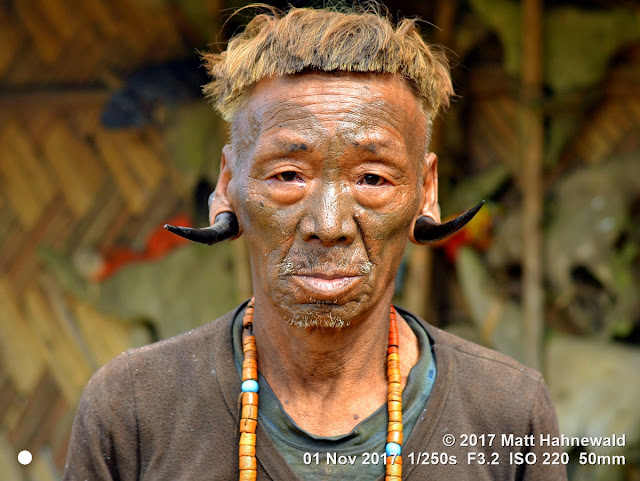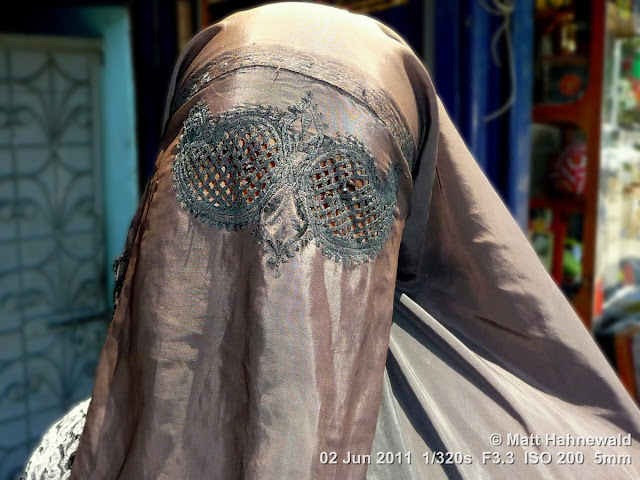The
coconut is known for its
great versatility as seen in the many culinary and nonculinary uses of its
different parts and found throughout the tropics and subtropics; virtually
every part of the coconut palm can be used by humans in some manner and has
significant economic value. The coconuts' versatility is sometimes noted in its
naming: (i) in Sanskrit, it is "the tree which provides all the
necessities of life" aka kalpa vriksha, and (ii) in the Malay language,
it is "the tree of a thousand uses" aka pokok seribu guna. Near
Palu on Central Sulawesi
lives a local artist who carves funny coconut heads, depicting his neighbours.
15 August 2011
24 June 2011
Reversing India's Turnaround
The back portrait aka "back shot" adds an additional perspective to the conventional front portrait,
especially for street photography. The viewer of a front portrait looks at the
subject from the outside, from the subject's dissociated
point of view. The viewer of a back portrait looks at the world in
an associated
way, as if s/he is looking through the subject's eyes, into the subject's (...and the photographer's) visual world, and s/he is being seduced
to play with the boundaries between internal and external expression. The
vantage point from behind uncovers a long overlooked tradition of portraiture that
flirts with the power of identification and mystery…
As much as the front can give away a person’s identity and characteristics, a photograph of one’s back adds an element of mystery by prompting more questions than answers. When that happens, even the most inconspicuous detail becomes worthy of observation in deciphering identity, circumstance and action.
An image of a person from the back can be both puzzling
and fascinating as one doesn't see the emotions from their faces and one
can only assume what they are feeling, as the back portraits of this blog post do attest.
Last but not least, the (candid) back portrait is a simple and practical tool for composition. It helps to guide the viewer's eye to meaningful objects, buildings, landmarks in the background. The selected depth of field (e.g. f/3.5 vs. f/8.0) and the chosen focus point (the subject in the foreground or the object in the background) are interesting artistic decisions...
High-res portrait photographs with full exif data, precise geotags and technical details in Matt Hahnewald's
19 June 2011
Ogling Old Ladakhi Women
Ladakh, Northern India, has a population of c. 260,000 which is a blend of many different ethnic groups, predominantly Tibetans, Monpas and Dards. A
feature of the Tibetan-Buddhist segment of Ladakh's community is the high status and relative emancipation enjoyed by women compared to other rural parts
of India. Fraternal polyandry and inheritance by primogeniture
were common in Ladakh until the early 1940s CE when these were made illegal by the
Indian government. However, the practice remained in existence into the 1990s
especially among the elderly and the more isolated rural populations.
15 June 2011
Pacing Ladakhi Monks
Tibetan Buddhism is the main religion in Ladakh and is followed by the majority
of the population; Tibetan is the spiritual language of Ladakh. Irrespective of
the rugged terrain and remote inaccessible areas of Ladakh, lamas and monks passed
through them and built monasteries aka gompas all over the place.
There are innumerable monasteries in Ladakh, some in ruins while others are
still in inhabited, running as educational and religious centres. Monasteries
have for long held an important position in Ladakh. Families used to send their
youngest son/s to a monastery to live and to study, knowing that the local
community took care of the monks and provided food. In return the monks took
care of weddings, funerals and other important ceremonies and rituals. The
tradition of sending a son to a monastery also helped to control population
growth. Ladakh is one of the main centres of Tibetan Buddhism outside Tibet,
and is sometimes called Little Tibet.
High-res portrait photographs with full exif data, precise geotags and technical details in Matt Hahnewald's
12 June 2011
Donning the Ladakhi Goncha
The
Ladakhi goncha, a voluminous robe of thick woollen cloth with a
colourful cummerbund tied at the waist, is the most common dress in Ladakh, Northern India; loose pyjamas, a distinctive
top hat and long felt boots complete the ensemble. It is very effective to
protect the people from the harsh and extreme cold weather of this region which
belongs to the Himalayas. For ceremonial purposes, colourful robes in silk and
brocade are worn.
High-res portrait photographs with full exif data, precise geotags and technical details in Matt Hahnewald's
Flickr Album 2011-06c Chasing Ladakhi Traditions
Flickr Album 2011-06c Chasing Ladakhi Traditions
Weighing the Ladakhi Perak
The
perak
is a very heavy headdress typically worn by the old aristocracy in the Himalayan Ladakh region of
India. It is composed of black lamb skin and a strap of leather studded with semi-precious stones,
such as lapis lazuli and turquoise, covering the head like a cobra's hood and tapering to a thin tail reaching down the back. The perak is a symbol among the
Ladakhis of the rank and economic status of the woman wearing it. Traditionally,
the number of front-to-back rows of turquoise signifies the status of the
wearer.
"A turquoise given by a loving hand carries with it happiness and good fortune."
(Arabic proverb, acc. to Judy Hall)
By the way, the turquoise stone crowns of the local village queens during the annual Mehta Festival in the Himalayan Mustang District of Nepal do look like smaller versions of the more sophisticated Ladakhi perak...
High-res portrait photographs with full exif data, precise geotags and technical details in Matt Hahnewald's
02 June 2011
Trifling with Serious Kashmir
Kashmir is
located in the northwestern region of South Asia and includes the Indian state
of Jammu and Kashmir, the Pakistan-administered territories of Azad Kashmir and
Gilgit-Baltistan, and the Chinese-administered regions of Aksai Chin and the
Trans-Karakoram Tract. The origin of the Kashmiri people is shrouded in mystery;
there are various theories that have been put forward in this regard. According
to one of the theories, the initial settlers in Kashmir were Aryans who
migrated from Central Asia. These people were a long headed race of tall structure
with narrow noses and fair complexion. Another theory of the Kashmiri descent posts
that the Kashmiri people of India and Pakistan originally descended from the Ten Lost Tribes of ancient
Israel.
Subscribe to:
Comments (Atom)
























































